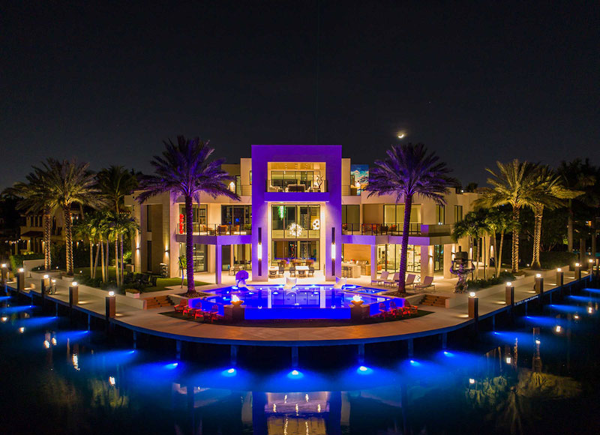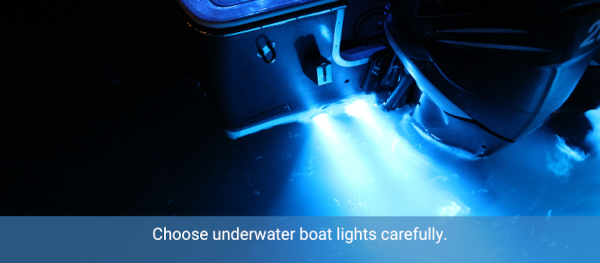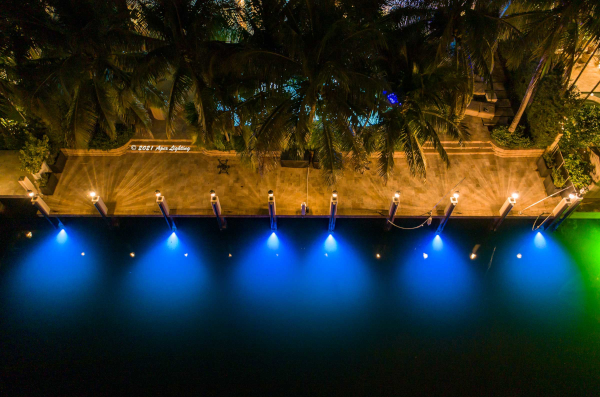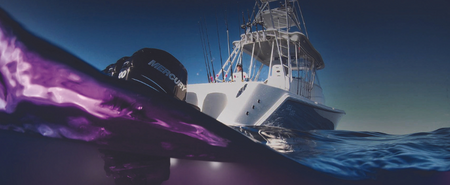3 Things to Avoid When Buying Underwater Lights for Your Boat
Posted by Apex Lighting on 5th Jan 2023
No doubt, underwater boat lights are expensive (at least, any worth buying) but you know that they’re well worth the investment.
The question is, how do you get the most bang for your buck quality-wise?
You might ask:
- How waterproof should your underwater lights be?
- What specific safety features should you look for?
- What materials are the best underwater lights made of?
These three things to avoid when choosing underwater lights will help answer these questions.
1 - Inadequate Waterproofing
Inadequate waterproofing is possibly the biggest red flag to watch out for because waterproofness is a spectrum, not a binary. It’s not whether your lights are waterproof or not, it’s how waterproof they are.
To evaluate how waterproof a product is, look at its Ingress Protection (IP) rating.
But how do IP ratings work, and which rating is right for underwater lights?
IP Ratings Explained
The IP rating is an international standard that manufacturers apply to products to indicate how resistant they are to penetration by both solids and liquids.
The first digit refers to protection against solids, while the second digit refers to protection against liquids.
The table below presents a detailed guide to understanding IP ratings.
| Level Of Ingress Protection | Solids | Water |
| X | X indicates that there is insufficient data to specify a protection rating for one of the criteria | |
| 0 | Not protected | |
| 1 | Protected against objects with diameter greater than 50 mm (such as a hand) | 10 minutes of protection from water drops falling vertically at a rate of 1 mm per minute |
| 2 | Protected against objects with diameter greater than 12.5 mm (such as a finger) | 10 minutes of protection from water drops falling diagonally (no more than 15°) at a rate of 3 mm per minute |
| 3 | Protected against objects with diameter greater than 2.5 mm (such as a screwdriver) | 5 minutes of protection from water sprays falling diagonally (no more than 60°) at a rate of 0.2 GPM (gallons per minute) at 11.6–14.5 PSI |
| 4 | Protected against objects with diameter greater than 1mm (such as a wire) | 5 minutes of protection from omnidirectional water splashes at 2.6 GPM at 11.6–14.5 PSI |
| 5 | Some dust protection. Allows limited dust ingress | 3 minutes of protection from a 6.3 mm water nozzle from every direction at 3.3 GPM at 4.3 PSI at a distance of 9.8 feet |
| 6 | Completely dust protected | 3 minutes of protection from a 12.5 mm water nozzle from every direction at 26.4 GPM at 14.5 PSI at a distance of 9.8 feet |
| 7 | Not Applicable | 30 minutes of protection from total submersion at a depth of up to 3.2 feet |
| 8 | Not Applicable | Protection against prolonged submersion at a depth of up to 9.8 feet |
| 9 | Not Applicable | Protection against powerful, high-temperature water jets |
Let’s use the table above to break down a few examples of IP ratings.
- IP46: The first digit specifies the level of protection against solid objects. In this case, the product is protected from ingress by solids over 1 mm in diameter.
The second digit specifies the level of protection against liquids. In this case, the product is protected from water sprayed from a 12.5-mm water nozzle for up to 3 minutes, so long as it doesn’t exceed a flow rate of 26.4 gallons per minute. Simply put, it’ll be fine if it gets caught in a rainstorm or is briefly left under a running tap. - IP66: It’s air-tight and protected from all rain and sea conditions short of total submersion.
- IP68: It’s air-tight and protected from prolonged submersion at a depth of 9.8 feet.
From this, we can see that the minimum acceptable rating for underwater lights is IP68. Anything less is simply asking for trouble unless the lights are not intended for total submersion.
2 - Inadequate Electrical Safety Features
Water and electricity don’t play nice with each other. So, if you’re going to mix them, it makes sense to adopt some safety measures.
When it comes to electrical safety for underwater lights, your first line of defense against electrocution—beyond careful handling—is a Ground Fault Circuit Interrupter (GFCI).
A GFCI serves as a defense against potentially lethal shock if any component of the lighting system fails. It detects when an electric current is passing through an unintended path (such as a human body) and quickly turns off power before a fatal current is delivered.
Generally, underwater lighting is completely safe if manufactured and used correctly. Compared to High-Intensity Discharge (HID) lights, low-voltage LED lights are far safer to use both in and out of the water. That’s not to say that HID lights are dangerous, they just require more care during installation and replacement.

It's not just you that needs safety features. The lights themselves need to be protected from:
- Overheating: HID lights are susceptible to overheating, often relying on the surrounding water for cooling, which is why they must be used underwater. This is one of several reasons why LED lights are becoming much more popular. They don’t produce nearly as much heat as similarly powered HID lights.
- Transient voltage spikes: A transient voltage surge suppressor cuts off the power supply in the event of a momentary surge in electrical power that can damage your lights.
- Reverse polarity: Reverse polarity protection ensures that a device is not damaged if the polarity of the power supply is reversed by disabling power to the transmitter or transducer's sensitive electronic circuits.
By their very nature, LED lights come equipped with reverse polarity protection.

3 - Poor Housing Made of Unprotected Rustable Metals
You must also consider the housing of the lights you intend to buy.
If your lights will be used in an environment where they’ll be exposed to the corrosive saltwater of the ocean, the housings must be made of rust-proof, marine-grade materials, such as:
- Stainless steel
- Galvanized steel
- Bronze alloy
- Anodized aluminum
- Copper
- Brass
- Alloy steel
- Carbon steel
These metals are referred to as marine-grade because they’re rust-resistant, which is a result of the fact that they are alloys.
For lenses, shatterproof polycarbonate and injection-molded plastics are ideal construction materials for their durability. Polycarbonate itself is 250x tougher than glass and almost unbreakable.
In this video, watch a man attempt to smash a polycarbonate skylight with a hammer:
Polycarbonate is an excellent choice for protecting against extreme weather, vandalism, and flying debris due to its impact resistance.
In terms of light transmission, it’s comparable to glass, which makes it a better option than glass because it functions visually the same but is much lighter and far more durable.
Bottom line: Materials designed specifically for use in marine environments are an investment that will provide much greater returns over time.
Choose Underwater Boat Lights Carefully
When choosing underwater boat lights, tread carefully. Since boat lights are expensive, you want to get it right the first time.
For over 26 years, Apex Lighting has provided the largest collection of high-quality lights and accessories for boats, yachts, and boat docks, with installation services to boot.
Apex Lighting strives to build long-term customer relationships with the primary goal of outperforming its competitors by ensuring the highest level of quality in everything they do.
Whether you need a simple LED light, lighting control systems, power supply accessories, or just casual lighting to make your boat more comfortable, you can rely on Apex Lighting.

To level up your boating experience with lighting, call Apex Lighting at 954-421-3267 or leave a message.
“Apex Lighting is a first-class operation. I have purchased all my LED lighting for my boats, construction projects, and my own house from them for over ten years. I recommend Apex Lighting.”
— Chad Hodder

